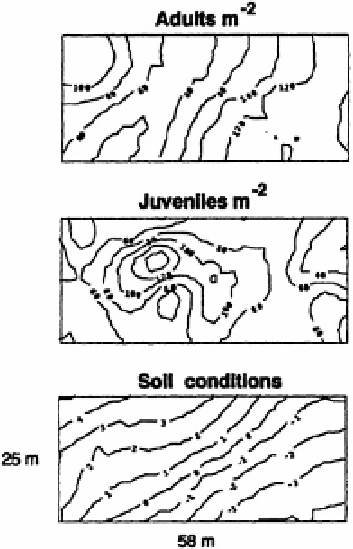Agriculture Reference
In-Depth Information
ics; these subpopulations form patches 20-30 m in diameter which appear and disappear
in the course of a few years (Martin, 1991). The patchy distributions of earthworms and
the variability of their demographic compositions observed within savanna lands tend
to support the hypothesis of a relative independence of distribution from soil properties
(Rossi, 1998). Similar patterns, though much more obvious were observed in popula-
tions of
Polypheretima elongate
in a pasture of Martinique (French West Indies):
in a 25x65 m plot, populations were distributed in patches of 20-40 m in diameter,
one patch mainly comprised young individuals and cocoons, while the other two were
dominated by adults. In this plot, the presence of earthworm patches seemed to be
independent of the distributions of such edaphic factors as soil depth and soil organic
matter content (Rossi
et al.,
1997) (Figure III.46).
Earthworm species stratify themselves vertically in the soil depending on their
ecological strategies. Epigeics are concentrated in the litter layers, endogeics may have
relatively superficial (polyhumics) or deep (in oligohumics) patterns of distribution (Gerard,
1963; Lavelle, 1978; Fragoso and Lavelle, 1987) (Figure III.47) whereas anecics may occur
at diverse depths depending on thermal and hydrological gradients (Bouché, 1984).


